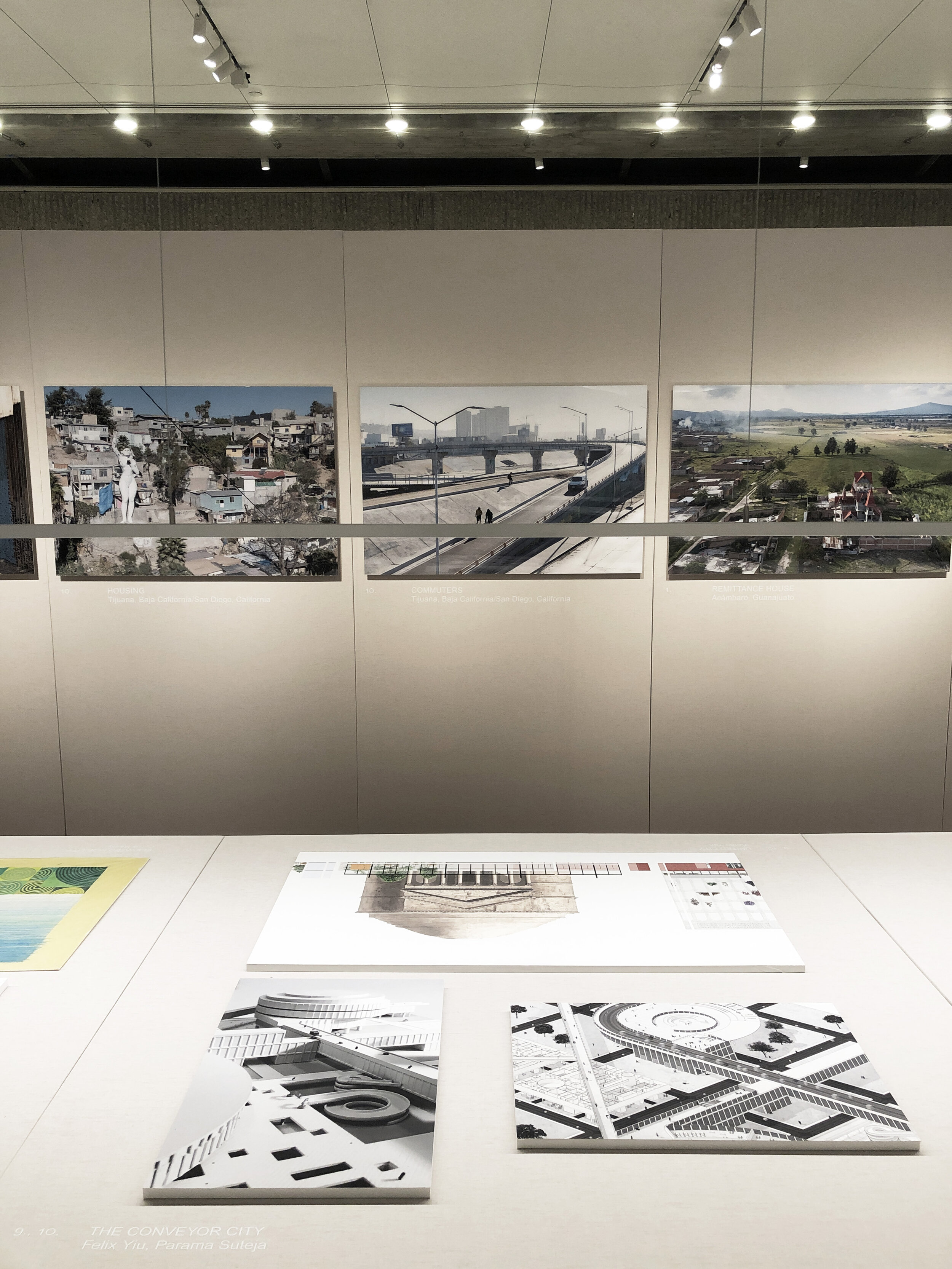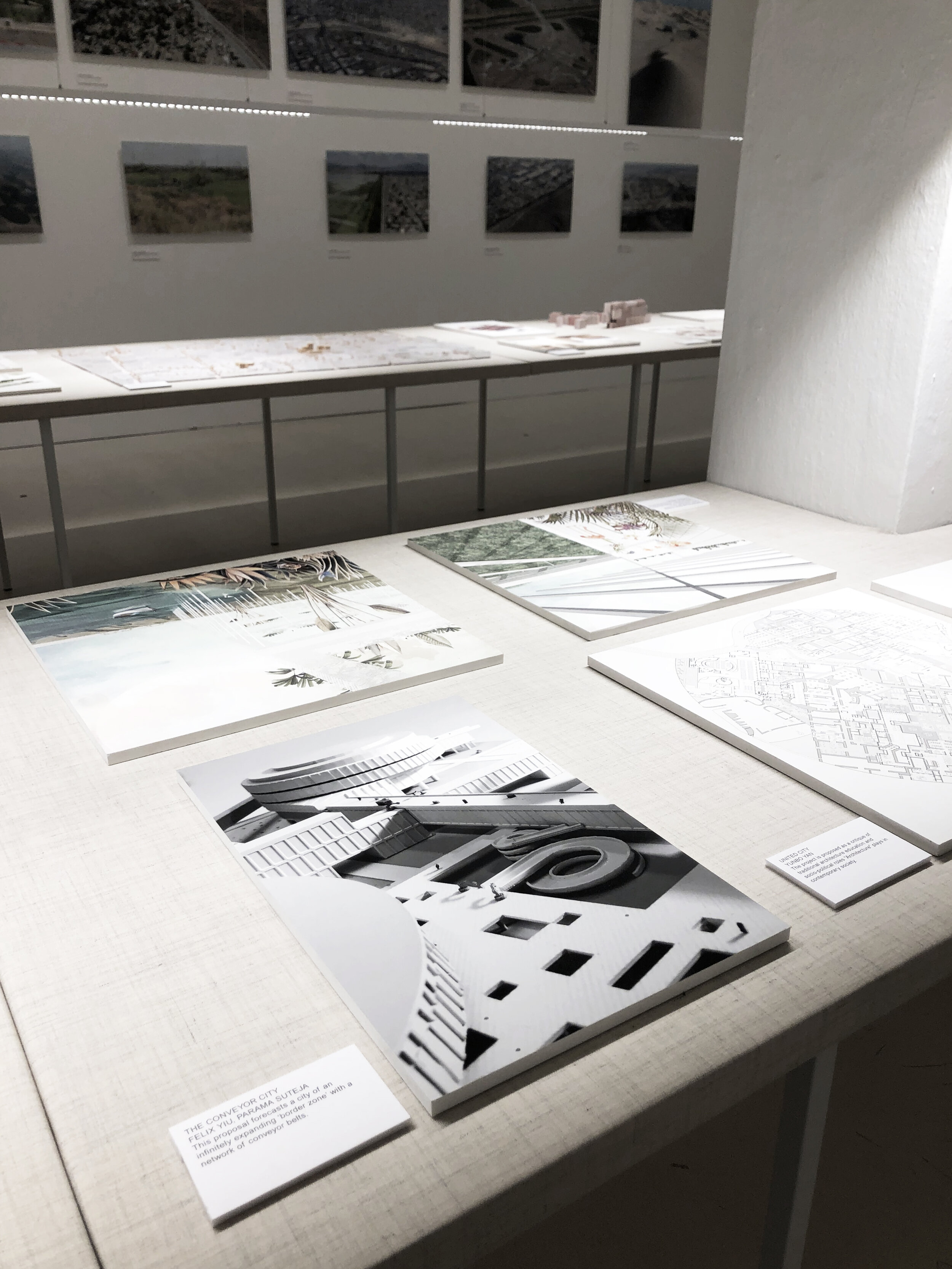CONTIGENCY
ARCH-100D • Two Sides of the Border
UC Berkeley • Instructor: Raveevarn Choksombatchai • Spring 2018 • in collaboration with Felix Yiu
Project selected for Tatiana Bilbao and Iwan Baan’s exhibition at Yale University and AEDES Architecture Forum 2019, Berlin, Germany
What if we stopped dividing the US and Mexico, and instead saw the border as one region? The idea of this project is to forecast a city of an infinitely expanding ‘border zone’ with a network of conveyor belts.
From a place that efficiently operates as a major network connecting all transportation hubs turns a metropolis where robust job growth and a growing economy attract people to move there. There is no longer a need to migrate across the border – The Conveyor City offers an alternative lifestyle and cultivates a new culture in an area that was once marginalized.
This City is characterized by a series of conveyor belts running across the US-Mexico border and forming a network connecting transportation hubs, fulfillment centers, convention centers, housing, etc. These conveyor belts carry both people and goods. Stratified vertically into several layers with respect to speed, the belts at the top run longest distances at the highest speeds, while the belts at the ground level run locally at lower speeds. Agriculture providing food source are dispersed throughout the city and located at the lower level. These belts facilitate cross-border movement and ultimately bring forth urbanism that simultaneously boasts self-sufficiency while recognizing the importance of interdependence.
Project selected for Tatiana Bilbao and Iwan Baan’s exhibition at Yale University and AEDES Architecture Forum 2019, Berlin, Germany.





















